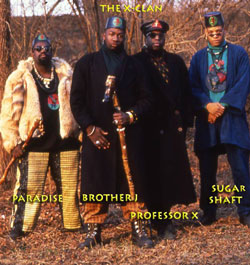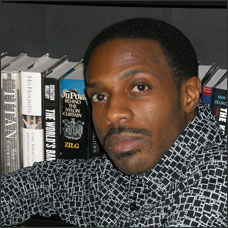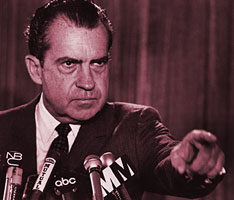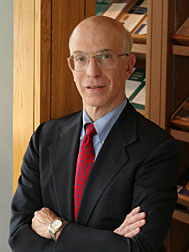I have marched until my feet have bled and I have rioted until they called the Feds.
What’s left my conscious said?
“Revolution” Arrested Development
 When folks gather in DC for the Jobs and Justice March and the Martin Luther King Memorial dedication this weekend, I betcha a million bucks that somebody is gonna pose the same question that people have been asking for the last 40 years. “What would Martin Luther King Jr say if he was here, today ?” If MLK was at the march, he would probably mean mug the crowd and yell “after all these years, why are y’all still marchin’ ?”
When folks gather in DC for the Jobs and Justice March and the Martin Luther King Memorial dedication this weekend, I betcha a million bucks that somebody is gonna pose the same question that people have been asking for the last 40 years. “What would Martin Luther King Jr say if he was here, today ?” If MLK was at the march, he would probably mean mug the crowd and yell “after all these years, why are y’all still marchin’ ?”
While people have accused the Hip Hop generation of being politically, apathetic (many times for good reason) the hardcore truth is that many young folks are just tired of traveling down the same road that has led us to nowhere-ville. They just need for someone to tell them the best way to bring about change.
Unfortunately, most old school cats are still trying to put the pieces of the puzzle together, themselves. They can’t answer the basic question, “after all these years of marching and protesting, why are the conditions of poor people, relatively, the same as they were back in 1963?”
The reason is simple. It’s called controlled chaos: when things appear to be out of order but they are really being controlled by a master shot caller. There are forces at work making sure that we stay lost in the wilderness and never make it to the Promised Land.
The government’s repression of political dissent goes back decades. One can trace it as far back as the early 20th century with the Bureau of Investigation’s attack on Marcus Garvey or the House UnAmerican Affairs Committee’s attacks on Paul Robeson and others.
 While it is known that the FBI’s COINTELPRO (Counter Intelligence Program) played a major role in destroying political movements during the late 60’s and early 70’s, what must be examined in the 21st century is “how” they did it.
While it is known that the FBI’s COINTELPRO (Counter Intelligence Program) played a major role in destroying political movements during the late 60’s and early 70’s, what must be examined in the 21st century is “how” they did it.
According to Ward Churchill and Jim Wall in their book, “Agents of Repression,” the FBI used several techniques to disrupt movements, including infiltrating organizations with agents, falsely tagging activists as “snitches” and assassinations. Another strategy was setting up phony, militant organizations or “pseudo gangs” “designed to confuse, divide and undermine, as well as do outright battles with authentic dissident groups.” This may even account for the street gangs of today who will kill on sight members of rival gangs but would never consider bangin’ on the system.
Also, although politicians praise the strategy of nonviolence, history teaches us that it is only after riots, when people start tearin’ stuff up, that the government suddenly is able to “find” money for all sorts of social programs that they couldn’t find before the rebellions. This is a technique that President Richard Nixon used as he transformed Black Power into Green Power.
One of the least talked about strategies to stop radical movements did not come from the Feds but from philanthropic foundations. According to Robert W Allen in his book “Black Awakening in Capitalist America,” these foundations used their money to co-opt the Black Power movement. The main organization responsible was the Ford Foundation, headed by former US national security advisor, McGeorge Bundy, who’s brother just happened to be William Bundy, former director of the CIA. Allen called the Ford Foundation “the most important, though, least publicized” organization manipulating the militant black movement.”
Not only did the foundations influence the direction of street organizations but they also manipulated Black studies programs at colleges to make sure they produced “Clarence Thomas’s” instead of “Malcolm X’s.” Noliwe Rooks discusses the efforts of the foundations to take the “black” out of Black studies in her book, “White Money, Black Power.”
Later, during the Hip Hop era, we see the role that entertainment corporations played in diverting the rebellious energy of poor and oppressed ghetto kids.
 During the golden age of conscious Hip Hop (1988-92) we witnessed a period that best represented how rap music could be used as a tool to organize the masses. This was a time when Hip Hop artists, not only made songs about fighting the power, but also participated in acts of civil disobedience such as when members of the X-Clan were involved in the “Day of Outrage” following the murder of Yusef Hawkins in 1989.
During the golden age of conscious Hip Hop (1988-92) we witnessed a period that best represented how rap music could be used as a tool to organize the masses. This was a time when Hip Hop artists, not only made songs about fighting the power, but also participated in acts of civil disobedience such as when members of the X-Clan were involved in the “Day of Outrage” following the murder of Yusef Hawkins in 1989.
However, after ’92, conscious Hip Hop was replaced by a materialistic music that made people want to be part of the system instead of fighting against it. They have made grown men walking around with their drawers showin’ the ultimate act of rebellion.
Perhaps the most telling example of the political manipulation of Hip Hop was the 2004 election when, instead of using their influence and resources to politically educate their constituents in the ‘hood, Hip Hop moguls created a politically ambivalent marketing strategy called “Vote or Die” that did little more than sell overpriced T-Shirts.
The most interesting political movement in recent history is Occupy Wall Street, as activists have successfully broken out of the box of the Republican/Democratic dynamic and have taken the fight straight to the seat of power. If this movement continues focusing on the source of the multiple problems facing the ‘hood ( the multi-national corporations) this could be a major tipping point, effecting the economic balance of this country.
However, we have already seen filthy rich celebrities co-sign what is supposed to be a poor people’s movement. And it is just a matter of time before some slick politician tries to turn radical, revolutionists into mild mannered voter registration political reformists good only for putting “Vote for Me” posters on people’s front yards.
Absolute power corrupts absolutely.
Today we find ourselves at the crossroads; one way leads to Freedom and the other road leads to perpetual oppression.
We all have a choice to make.
Do we we leave the next generation a movement for real socio-economic change or just sore feet and worn out Air Jordans?
TRUTH Minista Paul Scott represents the Militant Mind Militia. He can be reached at militantmindmilitia@gmail.com Website http://www.militantmindmilitia.com
source: http://militantmindmilitia.blogspot.com/2011/10/controlled-chaos-why-are-we-still.html




